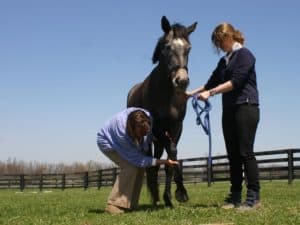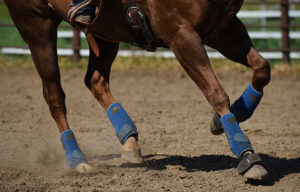Studying Santa Anita: A Key to Making Horse Racing Safer
- Topics: Article, Safety, Thoroughbred, Thoroughbred Racing, Thoroughbreds

Finding the cause of 21 equine fatalities at Santa Anita Park, in Arcadia, California, is key to the future of not only the venue but also the horse racing industry in general, says a Kentucky-based scientist who’s among those investigating the incidents.
“We ‘re doing the best we can with the information that we have, but we need to do more to improve safety for horses and riders in order to keep racing,” said Mick Peterson, PhD, director of the University of Kentucky’s Ag Equine Programs and a professor of biosystems and agricultural engineering. He’s also the executive director of the Racing Surfaces Testing Laboratory, through which he evaluates surface conditions at Santa Anita and other major racetracks nationwide.
From the time Santa Anita’s current race meet began in December 2018 until Feb. 25, 19 racehorses died or were euthanized as the result of injuries sustained while racing or training on Santa Anita’s dirt and turf tracks. In response, management closed the track to racing and training for two days so Peterson and others could evaluate soil samples and thoroughly examine the track’s cushion, pad, and base. However, those investigations revealed no track-related link to the fatalities
Create a free account with TheHorse.com to view this content.
TheHorse.com is home to thousands of free articles about horse health care. In order to access some of our exclusive free content, you must be signed into TheHorse.com.
Start your free account today!
Already have an account?
and continue reading.
Written by:
Pat Raia
Related Articles
Stay on top of the most recent Horse Health news with












